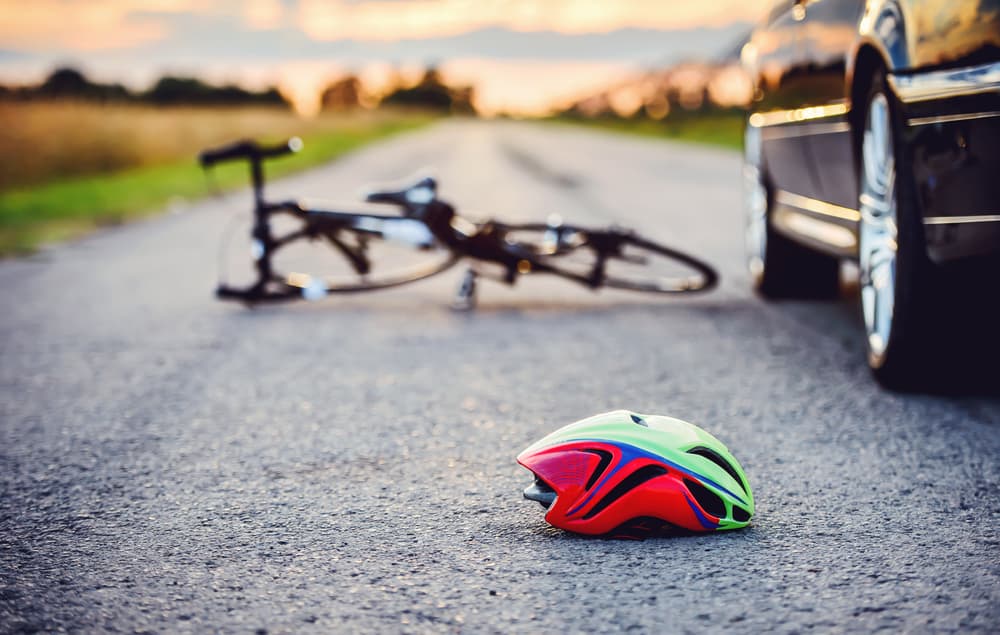Cyclists have the right to use the road as much as any other vehicle driver. However, cyclists are more vulnerable to accidents and can suffer more severe consequences in a collision.
If a bicycle accident injured you due to someone else’s negligence, you may get compensation for your physical injuries, emotional suffering, and financial losses.
Establishing Liability
Establishing liability is the first step toward filing a claim and recovering compensation. From duty of care in bicycle accidents to the finer points of legal responsibility, an experienced attorney can walk you through the process.
Duty of Care
Duty of care is the legal responsibility that one person owes to another. In the context of bicycle accidents, all road users must operate their vehicles responsibly and abide by traffic laws to prevent accidents.
For instance, motorists have a duty of care to not speed, signal before turning, and give cyclists enough space when passing. In a bicycle accident claim, establishing liability involves proving that the at-fault party breached a duty of care to the injured cyclist, resulting in the accident and injuries.
A breach of duty can be complex for bicycle accidents. Here’s what you need to know about breach of duty and general negligence.
Negligence, Reckless Behavior, or Violation of Traffic Laws
A breach of duty can occur when a driver or other road user acts negligently, recklessly, or violates traffic laws. For example, a driver who texts while driving, runs a red light, or drives under the influence breaches their duty of care.
Causation
Causation ties into liability and breach of duty. To establish liability, the injured cyclist must prove that the at-fault party’s breach of duty caused their injuries.
In personal injury cases, it is the victim’s responsibility to prove this breach. An experienced bicycle accident attorney can help you review the evidence and build a strong case.

Types of Injuries
Various injuries can occur in a bicycle accident. Physical injuries from bicycle accidents can range from minor scrapes and bruises to severe trauma, such as broken bones, spinal cord injuries, traumatic brain injuries, or even death. The severity of the injuries often depends on the speed of the vehicles and whether the cyclist wore protective gear.
Bicycle accident victims may also suffer from emotional and psychological injuries, such as anxiety, depression, post-traumatic stress disorder (PTSD), or other mental health issues that can have long-term consequences on their quality of life.
Types of Damages You Can Recover
Damages are not just injuries. From medical expenses to pain and suffering, an accident can affect you in many ways. Your losses, such as lost earnings or medical expenses, are recoverable. A lawyer can help you consider the following categories when establishing the value of a claim.
Medical Expenses
Medical expenses are the costs of treating bicycle accident injuries. These may include hospital visits, surgeries, medications, physical therapy, and ongoing care.
Lost Earnings
Lost earnings refer to the income a victim loses because they cannot work due to their injuries, including past and future loss of earning capacity if the victim is unable to return to their previous job.
Pain and Suffering
Pain and suffering account for the physical pain, emotional distress, and diminished quality of life a victim experiences. Calculating pain and suffering can be challenging, as it does not have a fixed value and often relies on expert testimony or comparisons to similar cases.
Property Damage
Property damage is the cost of repairing or replacing damaged items, such as the victim’s bicycle, helmet, or other personal belongings.
Other Financial Losses
Other financial losses may result from the disruption of the victim’s life after the accident, such as transportation costs, hiring caregivers, or home modifications if the victim now has a disability.
Documenting Injuries and Damages
Documenting injuries and damages carefully is crucial to building a strong bicycle accident claim and can affect the overall outcome of your compensation case. Documentation helps establish the extent of the victim’s injuries, prove the financial impact of the accident, and demonstrate the need for compensation.
Victims should preserve relevant evidence, such as medical records detailing treatments and costs, photographs of the injuries and damaged property, records of lost earnings, and any other relevant documentation.
Time Limits and Statutes of Limitations
Understanding the time limits for filing a bicycle accident claim is extremely important. Statutes of limitations are time limits for when a plaintiff must file a legal claim or lawsuit. These time limits vary depending on the type of case and jurisdiction.
Importance of Understanding the Time Limits for Filing a Claim
Failure to file within the prescribed period may prevent the victim from seeking compensation for their injuries. Each jurisdiction may have its own specific statute of limitations.
How Time Limits Vary by Jurisdiction
Time limits for filing a personal injury claim can vary significantly depending on the jurisdiction. In some places, the statute of limitations may be as short as one year, while in others, it may be four years or more. The clock generally starts ticking from the date of the accident. However, some jurisdictions may allow for a discovery rule, which begins the statute of limitations period based on when the victim discovered their injury.
Consequences of Missing the Deadline
Missing the deadline for filing a claim can have serious consequences for the injured cyclist. If the statute of limitations expires, the victim may lose their right to seek compensation for their injuries, regardless of how strong their claim is.
To avoid this, you’ll need to understand the applicable time limits and consult with an experienced personal injury attorney promptly after the accident to ensure timely action.
Insurance Coverage
Insurance coverage plays a crucial role in personal injury claims, as it is often the primary source of compensation for injured victims. Dealing with insurance companies can be complex, so understanding your rights and the available coverage is essential to maximize your compensation.
Types of Insurance Coverage Relevant to Bicycle Accidents
While Georgia is an at-fault state, you may need to know about other insurance that might cover your bicycle accident. This way, you have protection no matter where you are.
- At-fault party’s insurance: The at-fault party’s insurance policy, whether a motorist or another cyclist, can provide compensation for a bicycle accident victim’s medical expenses, lost earnings, and other damages.
- Your own insurance policy: In some cases, the injured cyclist’s own insurance policy, such as uninsured or underinsured motorist coverage, may come into play if the at-fault party does not have adequate insurance to cover the victim’s damages.
Challenges Related to Insufficient Insurance Coverage
Insufficient insurance coverage can pose a significant challenge for bicycle accident victims, especially if the at-fault party’s policy cannot cover the full extent of their injuries and damages. Additionally, dealing with multiple insurance policies or uninsured drivers can complicate the process of obtaining compensation.
Strategies for Maximizing Compensation in Cases with Limited Insurance Coverage
In cases involving insufficient insurance coverage, you need to explore all available avenues for compensation. An experienced personal injury attorney can identify potential sources of compensation, such as the at-fault party or other relevant insurance policies.
Skilled negotiation with insurance adjusters can secure the most possible settlement from the available coverage. In some cases, the injured cyclist may need to go to court to secure a judgment that adequately compensates their losses.
Gathering and Presenting Evidence
Evidence is the foundation of a strong personal injury claim. It helps establish liability, demonstrate the extent of injuries and damages, and support the case against the at-fault party.
Well-documented and persuasive evidence can significantly affect the outcome of a bicycle accident claim and maximize the compensation you receive. Personal injury lawyers have experience with effectively using evidence to support a claim and can offer guidance.
Types of Evidence Relevant to Bicycle Accidents
Collecting evidence of the accident can help you claim appropriate compensation.
Evidence could include witness statements or any relevant medical documentation.
- Photographs of the accident scene: Pictures can provide critical visual evidence of the accident scene, including the positioning and condition of the vehicles, road conditions, and any visible injuries.
- Witness statements: Testimony from individuals who witnessed the accident can help corroborate the victim’s account of the events and establish the at-fault party’s negligence.
- Police reports: Official reports from law enforcement officers responding to the accident can contain essential information, such as the officer’s observations and opinions on the causes of the accident.
- Other relevant documentation: Medical records, repair estimates for damaged property, and proof of lost earnings are important pieces of evidence to substantiate the extent of the damages.
If you need help determining what constitutes evidence in your claim, contact a personal injury attorney for guidance.
The Role of Legal Representation
Hiring an experienced attorney can make all the difference in helping you get the compensation you deserve.
Here are the benefits of hiring a personal injury attorney.
- A personal injury attorney can help the injured cyclist navigate the complex legal process, ensuring they meet deadlines and follow proper procedures.
- Attorneys are skilled in collecting and analyzing evidence to build a strong case on behalf of their clients.
- Personal injury attorneys have experience dealing with insurance adjusters, which can be invaluable when negotiating fair compensation.
- If you do not reach a fair settlement, an attorney can present the case in court, fighting on your behalf to obtain the maximum compensation possible.
Most personal injury lawyers offer free consultations. You have nothing to lose.
Choosing the Right Attorney for Your Case

When selecting a personal injury attorney to represent you, consider their experience with bicycle accident cases, track record of successful outcomes, communication style, and fee structure.
To find a qualified attorney, seek recommendations from friends or family, conduct online research, and schedule consultations with potential lawyers. During the consultation, ask questions about their experience, approach, and success rate to determine if they fit your case.
Here are some questions you could ask:
- What sort of clients do you work with?
- What’s your success rate?
- What do you charge?
- What sort of timeline am I looking at?
Most lawyers hear all kinds of questions and will happily resolve your concerns so you can move forward with your compensation claim.
An Experienced Bicycle Accident Lawyer Can Advocate for You
If a bicycle accident injured you, an experienced personal injury attorney can increase your chances of a successful claim.
As a cyclist, learn your rights and prepare to pursue compensation after an accident so that you can recover from your injuries and financial losses.
